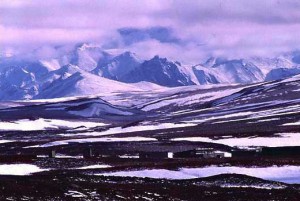Podcast: Play in new window
BOB HIRSHON (host):
Pioneers of the Arctic. I’m Bob Hirshon and this is Science Update.

Gambels’ white-crowned sparrows migrate thousands of miles every year to breed at Toolik Lake in the Arctic Circle. But recently, some birds have begun nesting up to 150 kilometers north of there due to climate change. UC Davis biologist John Wingfield and his team set out to discover what makes an avian pioneer.
JOHN C. WINGFIELD (University of California, Davis):
These birds that are moving into this new habitat as it becomes available are not necessarily the biggest and strongest. They may be the weakest and smallest and couldn’t make it in the main territorial range and were forced out into the perimeter.
HIRSHON:
Instead, what appears to set these birds apart is a highly variable response to the harsh, unpredictable environment, as measured by stress hormones.
WINGFIELD:
So now we think one possible mechanism that makes a pioneer is a very very flexible response to acute stress.
HIRSHON:
I’m Bob Hirshon, for AAAS, the science society.
